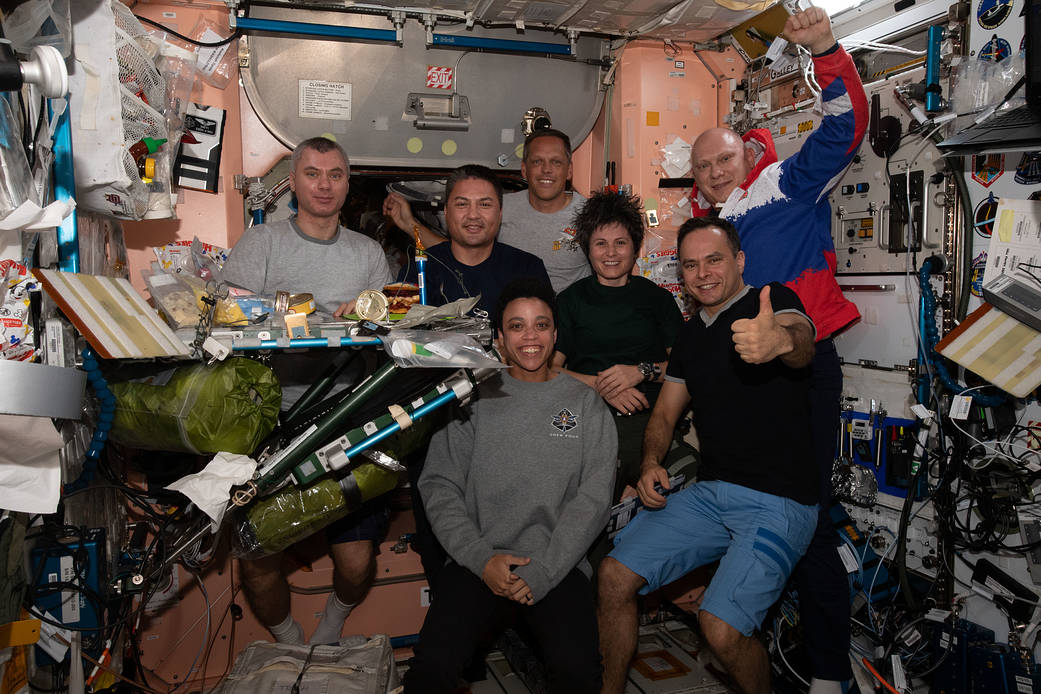
Expedition 67 Crew: image courtesy of NASA
On Friday, May 27, 2022, the NASA’s Expedition 67 crew continued its ongoing human research by taking ultrasound eye exams and blood flow measurements in the brain aboard the International Space Station (ISS).
Four astronauts aboard the International Space Station (ISS), flight engineers Kjell Lindgren, Bob Hines, Samantha Cristoforetti, and Jessica Watkins, gathered in the Columbus laboratory module Friday morning to scan each other’s eyes using the Ultrasound 2 device. The Ultrasound 2 is a modified commercial off-the-shelf (COTS) Ultrasound system that provides high-resolution ultrasound images of target areas in the human body. The results of these tests will help doctors and researchers make new determinations regarding how living in weightlessness impacts the eye, the retina, and vision.
Additional tests were performed to monitor blood flow in the body of engineer Bob Hines as part of the Cerebral Autoregulation investigation, aimed at exploring how the brain regulates blood flow in microgravity. Data from this test is likely to be used to benefit astronauts who experience lightheadedness and variations in blood pressure upon return to Earth.
Circa NASA: The Human Cerebral Autoregulation during Long-duration Spaceflight (Cerebral Autoregulation) investigation tests whether this self-regulation improves in the microgravity environment of space. Non-invasive tests measure blood flow in the brain before, during, and after a long-duration spaceflight, and provide new insights into how the brain safeguards its blood supply in a challenging environment. When the brain cannot compensate for a sudden drop in blood pressure, a person becomes lightheaded, or briefly loses consciousness in a fainting episode. This is known as syncope, and it affects millions of people worldwide. Understanding how to improve the brain’s self-regulation of blood flow would benefit these patients, as well as future space travelers.